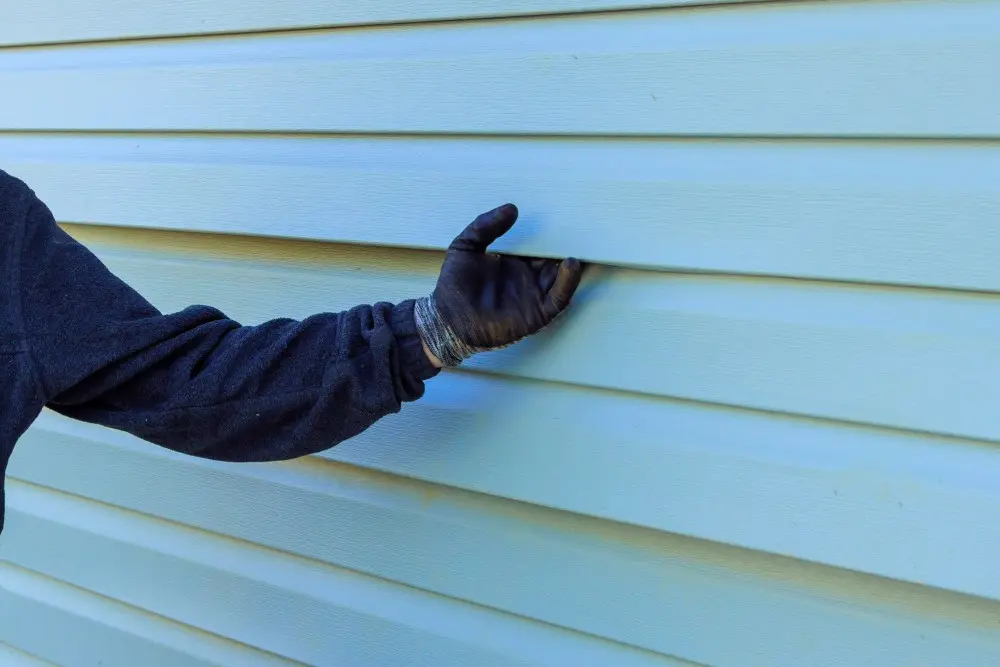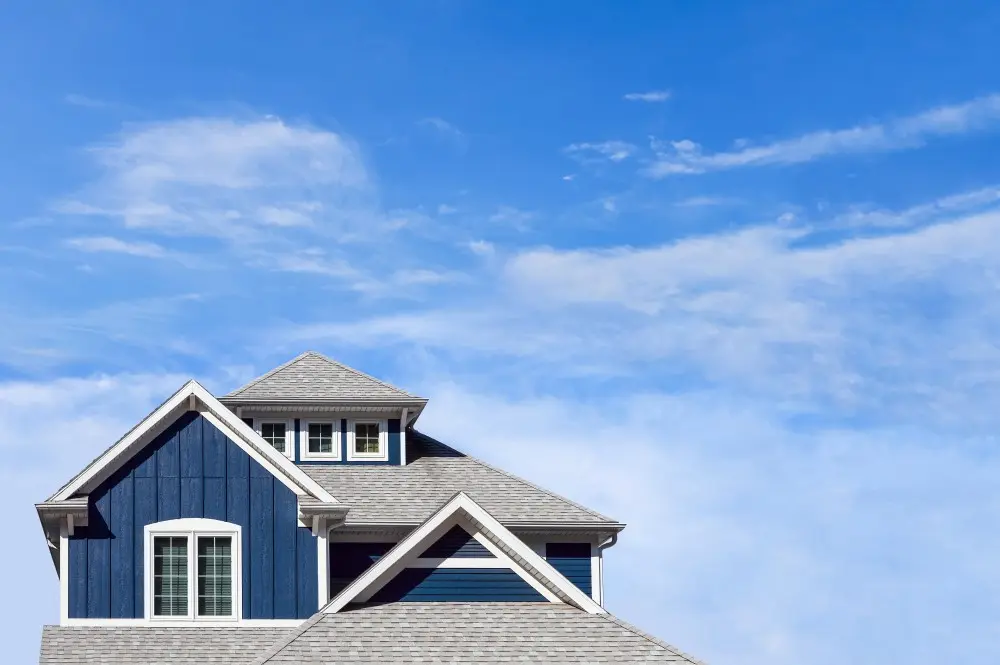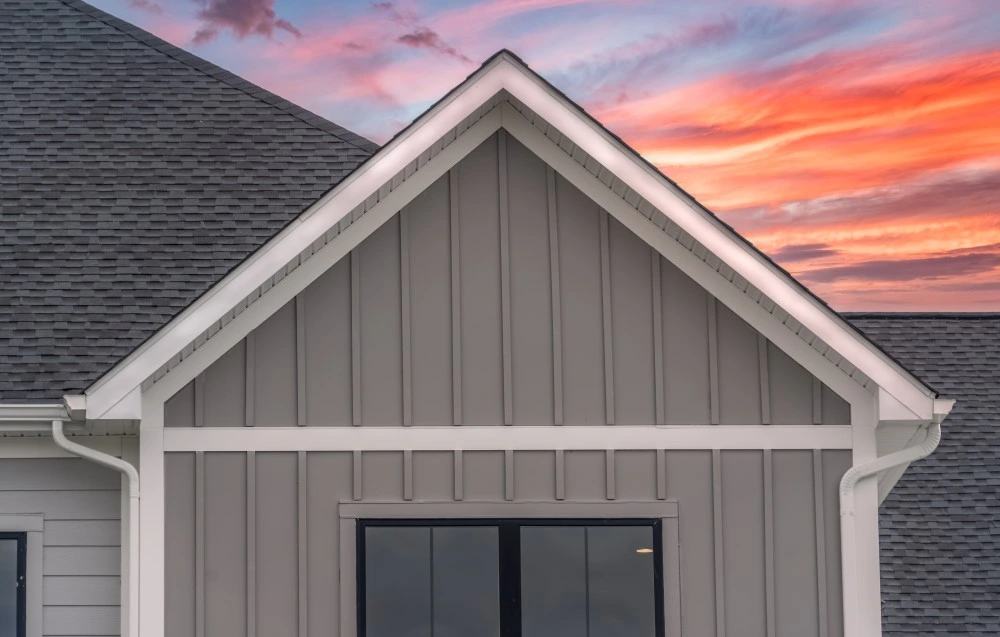Fiber Cement Siding in Chicago: Worth the Investment or Overhyped?
- 30min
- Updated:10/3/2025
- ByShaunak Ahuja
Chicago homeowners often face frustrating problems with aging siding: moisture seeping behind panels, persistent woodpeckers drilling holes, unsightly cracks from harsh freeze-thaw cycles, and general deterioration that diminishes both protection and curb appeal. These issues often signal it's time for replacement, but with siding being a substantial investment, you deserve honest guidance before making a decision.
As professional fiber cement siding installers who've completed thousands of siding projects throughout Chicagoland, we've witnessed firsthand how this material performs in our extreme climate. In this blog, the HX Home Solutions team will share practical insights about fiber cement's real-world advantages and limitations to help you decide if it's the right choice for your home.
What Makes Fiber Cement Siding Stand Out?

Fiber cement stands apart from traditional siding materials through its unique composition of Portland cement, sand, and cellulose fibers, creating a remarkably stable, durable product that withstands Chicago's challenging weather conditions.
The American market features three dominant manufacturers of fiber cement siding products: James Hardie (often referred to as "Hardie Board") leads the industry, followed by Allura and Nichiha. These brands offer extensive manufacturers' warranties and provide materials for both homes and commercial buildings.
Pros of Fiber Cement Siding: Beyond the Basics
If you’re considering replacement siding for your Chicago home, understanding the specific advantages fiber cement offers in our unique climate can help determine if this premium material is worth the investment.
50+ Year Durability That Withstands Chicago Winters
Fiber cement siding offers exceptional longevity, typically lasting 50+ years when properly installed and maintained. Its near-zero expansion rate during Chicago's extreme temperature swings prevents the buckling, warping, and cracking common with aging wood and vinyl siding. This dimensional stability is especially valuable during our notorious freeze-thaw cycles that quickly deteriorate lesser siding options.
100 Percent Resistant to Chicago's Persistent Pests
Homeowners with wood siding know the frustration of discovering woodpecker damage, carpenter ant infestations, or termite activity. Fiber cement eliminates these concerns — it holds no appeal for pests and can't be damaged by them. This pest-resistant quality removes a significant maintenance headache, particularly in wooded suburban neighborhoods where pest pressure is higher.
If you're tired of never-ending woodpeckers and pests, fiber cement siding is an ideal option for you.
Superior Weather Resistance in All Four Seasons
From January blizzards to August humidity, fiber cement maintains its structural integrity through Chicago's diverse weather conditions. Unlike wood siding, it doesn't absorb moisture, swell, or rot when exposed to snow, ice, and rain.
Unlike vinyl siding, it doesn't become brittle in subzero temperatures or warp and buckle during summer heat waves. This consistent performance throughout extreme seasonal changes makes it well-suited to our Midwest climate.

Class A Fire Rating for Dense Urban Neighborhoods
Fiber cement siding offers crucial fire resistance with its Class A fire rating — the highest available for building materials. Composed primarily of non-combustible components, it won't ignite when exposed to flame and can significantly slow fire spread. This safety feature offers peace of mind in Chicago's closely built neighborhoods, where house fires can quickly affect adjacent properties.
In Chicago's unpredictable climate, fiber cement delivers exceptional performance across several factors that matter most to homeowners: durability, weather resistance, safety, and aesthetic versatility. It’s no surprise that it’s increasingly popular for those seeking a low-maintenance alternative.
The Limitations of Fiber Cement Siding: What Homeowners Should Know
While fiber cement offers numerous advantages, it's important to understand its limitations before committing to this material for your home's exterior.
15-25 Percent Higher Initial Investment Than Vinyl
Fiber cement typically costs 15-25 percent more than another premium option that lately has been compared to fiber cement siding — vinyl siding. For a typical Chicago home, this translates to several thousand dollars in additional initial cost. However, evaluate this higher investment against fiber cement's extended lifespan and reduced maintenance expenses over decades of ownership.
Note: If you're not planning to stay in the home for at least 5-7 years, the return on investment may not fully materialize. Even though houses with fiber cement siding have higher resale value, you might consider another option for the siding project: vinyl siding.
2.5-3x Heavier Material Requiring Specialized Installation

This additional weight requires proper structural assessment, specific fastening techniques, and experienced handling to prevent damage during the installation process. While DIY enthusiasts might handle vinyl installation, fiber cement's weight and specialized cutting requirements make professional installation essentially mandatory.
Note: Although the official James Hardie website provides installation guides, fiber cement siding is 90 percent NOT DIY-friendly, unless you have a group of enthusiasts with significant experience in exterior remodeling projects.
Not Maintenance-Free Despite Low Upkeep Requirements
Though fiber cement requires significantly less maintenance than traditional wood siding, it's not entirely maintenance-free. The material will eventually need repainting (typically after 15+ years for factory-finished products), and caulking around windows, doors, and seams will need periodic refreshing to maintain optimal water resistance. In Chicago's harsh environment, we recommend annual inspection for caulk failures or loose boards, especially after severe winters.
Not Insulated — R-Value Considerations
Fiber cement isn't insulated, providing minimal thermal resistance (R-value) on its own. While it creates an excellent moisture barrier, it doesn't significantly improve your home's energy efficiency without additional insulation. For Chicago homeowners concerned about energy costs, be sure to discuss supplemental insulation solutions during the project planning phase.
Weather-Dependent Installation Timing
While technically installable year-round by experienced professionals, extremely cold temperatures below 20°F can complicate fiber cement installation. The material becomes more brittle in extreme cold, increasing the risk of chipping during cutting and fastening. Additionally, specialized caulking and sealing products perform best within specific temperature ranges, potentially affecting installation scheduling during Chicago's coldest winter months.
Despite these limitations, fiber cement's advantages typically outweigh these drawbacks for most Chicago homeowners, especially those planning to stay in their homes long-term. The key is understanding these factors upfront and working with experienced installers who can address potential challenges with proven solutions.
Comparing Fiber Cement Styles: Finding Your Perfect Match
We've covered fiber cement's general performance characteristics, but what about specific styles? Does the performance vary between different fiber cement profiles? Let's examine the styles of James Hardie fiber cement siding and their specifications to understand whether certain styles might be better suited for specific applications in Chicago homes.
Plank Lap Siding
Wider planks (7.25" and above) create a more modern aesthetic, while narrower planks suit traditional homes. This style performs exceptionally well on all sides of a home, including areas with high weather exposure.
Trim Batten Boards
The increasingly popular board-and-batten style has become a signature look for modern farmhouse designs across Chicago's suburbs. The vertical orientation provides excellent water shedding capabilities when properly installed, though it’s critical to pay special attention to seam sealing in our climate's freeze-thaw cycles.
Shingles
Shingle siding mimics traditional cedar shake with straight or staggered edges, offering timeless charm for Chicago's Tudor, Cape Cod, and Craftsman homes. While slightly thinner than plank siding, it offers the same durability and weather resistance when properly installed. Hardie shingles are generally better than cedar shingles for a siding project if you prioritize long-term durability, fire resistance, and lower maintenance over natural wood aesthetics.
From a performance standpoint, all styles provide essentially the same durability and weather resistance when correctly installed. We recommend basing your choice primarily on your home's architectural style, neighborhood context, and personal aesthetic preferences rather than significant performance differences between styles.
The True Costs of Fiber Cement Siding in Chicago: Beyond the Price Tag
For most homeowners, cost remains one of the most significant factors when comparing siding materials. Understanding the complete financial picture — not just the initial price tag — is essential for making a sound investment in your home's exterior.
Note: These approximate 2025 prices reflect average costs across Chicago siding contractors and material manufacturers. Variables affecting your specific project cost include home design complexity, accessibility challenges, neighborhood regulations, and current material market fluctuations.
Looking beyond the initial investment reveals fiber cement's compelling long-term value. According to the 2024 Cost vs. Value Report, fiber cement siding replacement offers an exceptional 88.4 percent return on investment, which is one of the highest ROIs among exterior renovation projects. Additionally, many homeowners experience reduced insurance premiums, minimal regular maintenance expenses, and increased market appeal when selling their homes. It also outperforms asbestos siding, manufactured stone, and other siding materials in lifespan.
Making Your Decision: Is Fiber Cement Right for Your Chicago Home?
Every home and homeowner is unique, so there's no universal answer when choosing siding. Your specific situation should guide your decision based on several key factors:
Both professional guidance and your priorities should inform this significant investment decision. We encourage you to schedule a consultation with experienced siding specialists who can evaluate your specific home conditions and help you weigh these factors in context.
The Bottom Line: Is Fiber Cement Worth It for Chicago Homes?
For most Chicago homeowners, fiber cement siding balances durability, aesthetic versatility, and long-term value. Its ability to withstand our extreme seasonal changes while maintaining its appearance and structural integrity for decades makes it particularly well-suited to our challenging Midwest climate.
At HX Home Solutions, our professional home exterior remodeler has decades of experience installing fiber cement siding throughout Chicago. We provide personalized guidance tailored to your home conditions and priorities. Contact us today to discuss whether fiber cement is the right choice for your siding replacement project.





